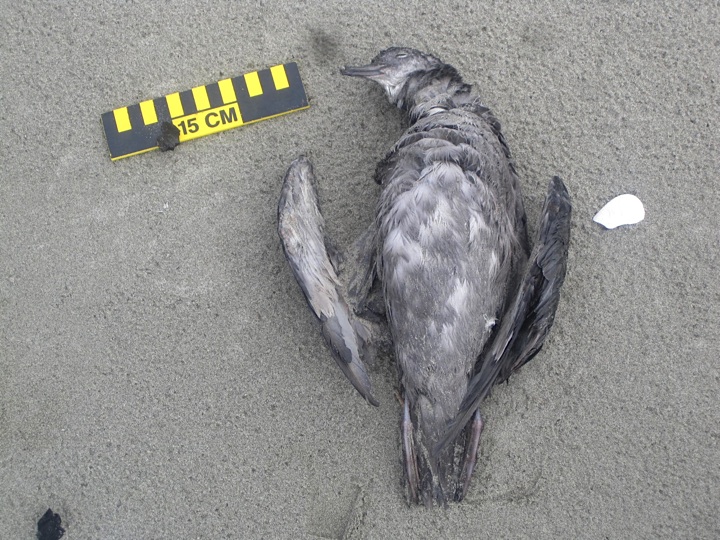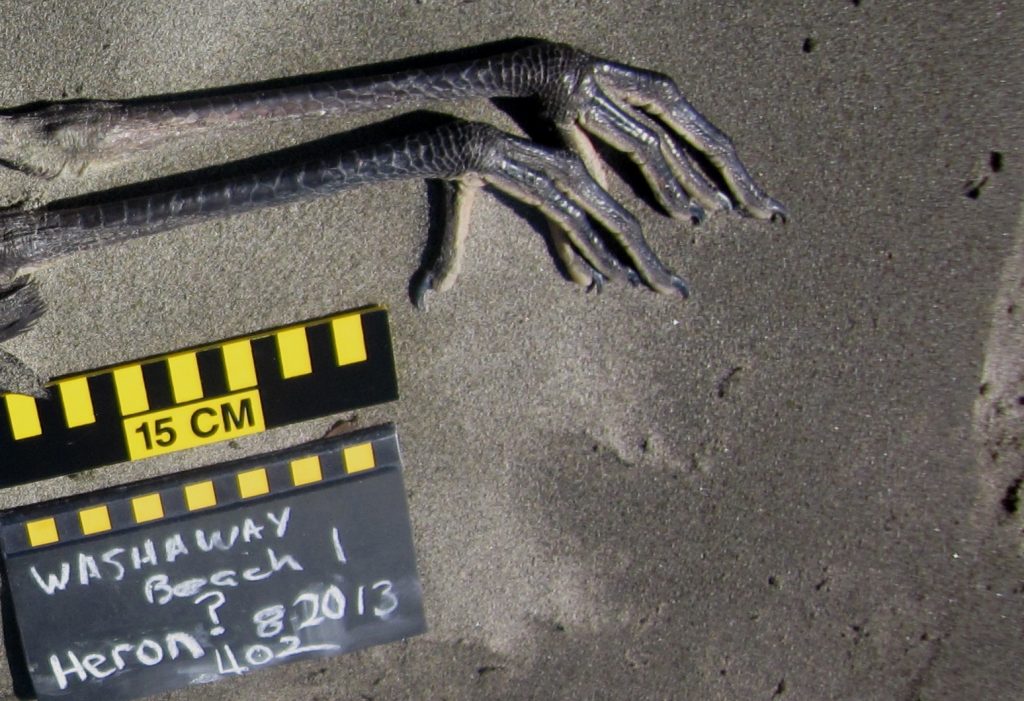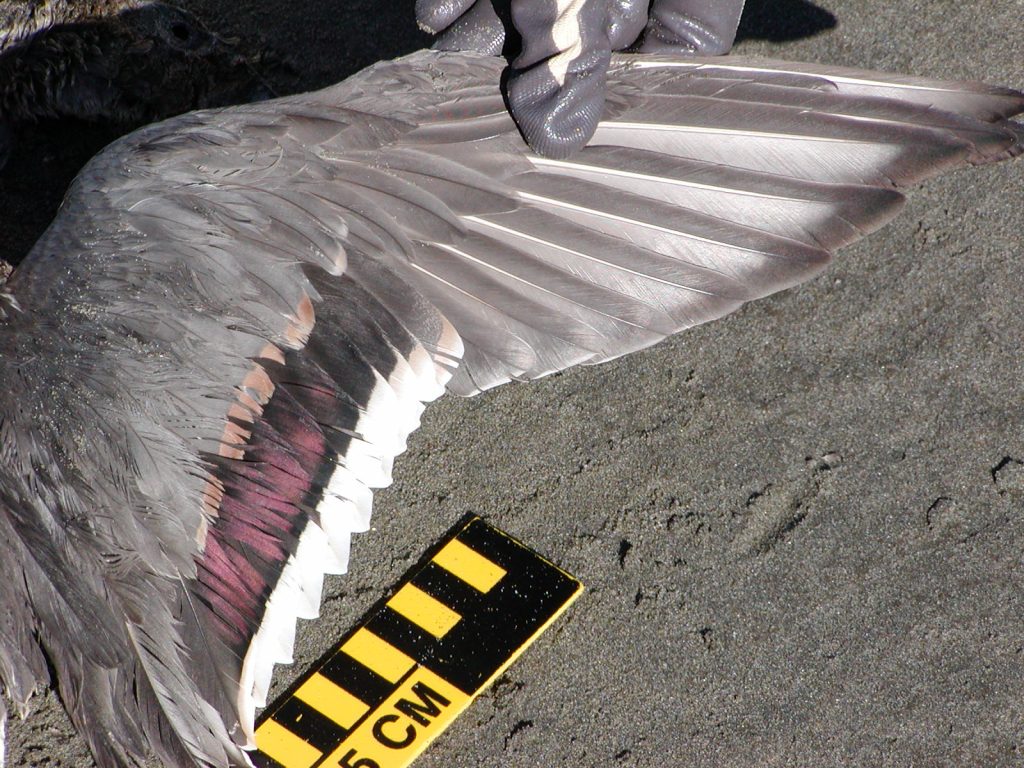Hope your week is off to a great start. With the fall weather upon us, now is a great time to check your COASST supplies and make sure you have plenty of rite-in-the-rain data sheets. Looks like there will be lots of rain in the future. We are lucky to have such a great group of volunteers who face the cold and rain to collect these valuable data. Here’s a look at a few of the many things found along our coastline in the last few weeks.
A Short-tailed Shearwater found by Ken in the Chukchi. Three webbed toes with a 4th minute (tiny) toe and flat heel puts this bird in the Tubenose: Petrels family. And a wing chord over 20 centimeters let’s us know it’s not a Storm-petrel.
Using Beached Birds-Alaska, the dark bill points us to either Short-tailed Shearwater (TN5) or Sooty Shearwater (TN7). STSH generally have gray-to-brown underwings and a shorter bill, whereas SOSH have white-to-pale underwings and a longer bill. With a bill of 31cm, this is definitely a Short-tailed Shearwater.
Using Beached Birds, look at the bill shape and tarsus. A thin and long bill and flat tarsus lead us to the shearwaters. We have three to choose from: Sooty Shearwater (TN5), Short-tailed Shearwater (TN7), or Pink-footed (TN15). We can rule out Pink-footed: mostly pale bill, white throat, belly, and underwing linings. With underwings that are more gray than white and a shorter (29-34mm) bill, this is a Short-tailed Shearwater.
Great Blue Heron feet found by Stanley and Resha in the South Coast of Washington. Time for some practice with the foot key. Free toes send us to Q9. Three toes in front, one in the back sends us to Q10. None of the toes are fused – go to Q11. With a tarsus over 150 mm, four toes of the same length, and a comb-like nail on the middle toe, we’re looking at a wader. You’ll notice the “waders” label is in italics. This means Wader species are not part of Beached Birds, so we can’t go any further – writing “Waders” on your data sheet is just fine.
An owl found by Cathleen and Daphne in the San Juans. Here’s another chance to practice with the foot key. This foot follows the same path through the guide as the wader, except a tarsus less than 150 mm will send us to Q12. With multiple claws and a feathered tarsus we’re looking at a Land Bird: Owl. Again this label is in italics: no species profiles of owls are included in Beached Birds.
A Northern Pintail found by Kathy and Lyn on the South Coast of Washington. Now for some practice with just a wing!If you are using the wing table, at 25.5cm this wing falls in the Med-Lg category. That iridescent stripe in the secondaries is called a speculum, giving us four options; Northern Pintail (WF9), Mallard (WF11), White Winged Scoter (WF3), King Eider (WF21). Out of these birds, the only one has a tan-dark-white speculum pattern, from leading to trailing edge: Northern Pintail, male.If you are using the west coast wing key, select secondaries contrasting and dark sending you to Q18. Then choose tan stripe above and white below secondaries. A measurement of 25.5cm is well above the range for Green-winged Teal.If you are using the Alaska wing key, select light or dark speculum and/or one or more white patches taking you to Q17. Here choose dark speculum, no patch leading to Q24. Speculum with buffy stripe above and white below gives you a Northern Pintail, male.
A blue drum found by Heather in Oregon. Drums like this one, found on the beach, can sometimes contain hazardous chemicals. If you find an item like this, do not touch or attempt to move. These items should be reported to the National Response Center by calling 1-800-424-8802 or visiting their website.





